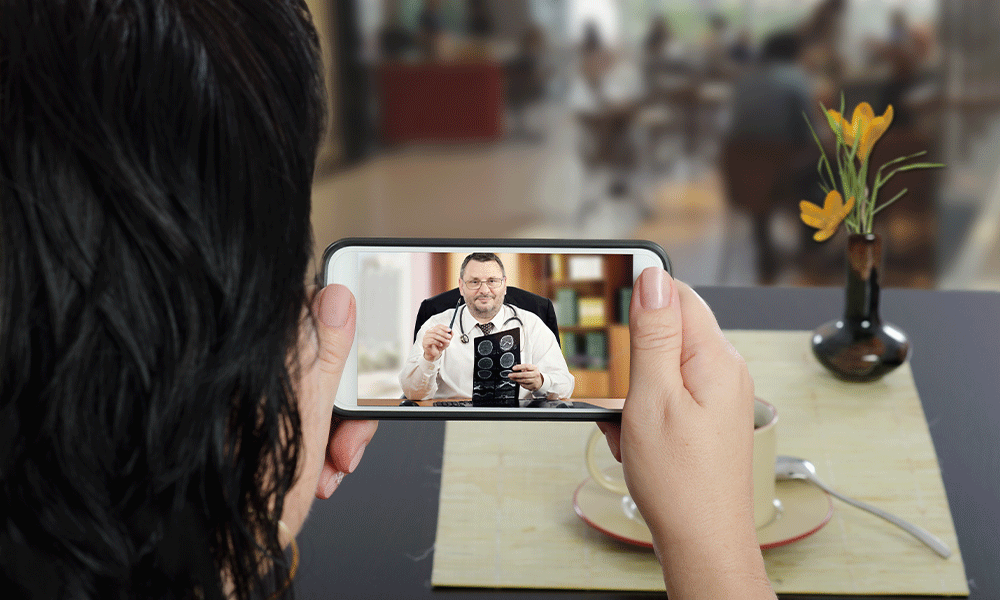Telehealth Groups May Improve the Social Lives of Young Cancer Populations
Most patients with cancer who took part in a telehealth group expressed that they liked the members of their group and felt less social isolation.
Overall, 39% reported feeling very satisfied with their experience in the telehealth group, 44% reported feeling satisfied, and 17% reported feeling somewhat satisfied.

Telehealth group intervention demonstrated the potential to decrease social isolation as a feasible, acceptable, and preferred alternative over in-person groups in adolescents and young adults (AYAs) with cancer, according to findings from a feasibility pilot study presented in a poster session at the 2025 American Psychosocial Oncology Society Meeting.
Of the patients who completed the acceptability measure (n = 18), 78% strongly agreed that they would recommend the telehealth group, 17% somewhat agreed, and 6% somewhat disagreed; 83% strongly agreed that they liked their group leader and 17% somewhat agreed; 83% strongly agreed that they liked their group members, 11% somewhat agreed, and 6% neither agreed nor disagreed. Additionally, 61% strongly agreed that the group was helpful, 33% somewhat agreed, and 6% neither agreed nor disagreed; 61% strongly agreed they felt less isolated or alone, 33% somewhat agreed, and 6% strongly disagreed.
Overall, 39% reported feeling very satisfied with their experience in the telehealth group, 44% reported feeling satisfied, and 17% reported feeling somewhat satisfied. Additionally, 70% of patients preferred telehealth groups, 14% preferred in-person groups, and 16% had no preference.
“[AYAs] with cancer report feeling socially isolated and express desire for peer support groups,” lead study investigator Sherilynn Chan, PhD, from the Seattle Children’s Hospital and the University of Washington, stated in the poster. “Findings suggest the telehealth group intervention is feasible, acceptable, preferred over in-person groups, and has potential to decrease social isolation.”
A total of 37 patients between 14 and 35 years (mean, 19.7; SD, 4.86) who were in the High School and AYA Cancer Group participated in the trial; the groups were offered twice annually and consisted of 6 to 8 weekly sessions. Those who were AYAs who were on or had received treatment for cancer, brain tumors, or medical conditions requiring hematopoietic stem cell transplant were assigned to the High School Group or AYA Group. Additionally, 51% of patients were female, and 73% were White.
The trial’s objectives were to evaluate the feasibility and acceptability of an existing telehealth peer support group intervention, conduct patient stakeholder interviews, and administer exploratory measures of patient-reported outcomes both before and after intervention. Feasibility was described as enrollment, attendance, and attrition.
Groups met for a total of 6 to 8 weekly sessions; 43% of patients attended 6 to 8 sessions, 41% attended 1 to 2 sessions, and 16% of patients attended 3 to 4 sessions. Of the 49 patients who were scheduled to participate, 37 attended at least 1 session; the most cited reason for absence was medical appointments, and 3 patients withdrew from the groups.
The authors noted that there was 100% pre-intervention and 85.7% post-measure completion for patient-reported outcomes, indicating that the study procedures were feasible. The study also included a preliminary analysis of 12 interviews conducted with patients who participated in the groups.
One patient from a group said, “I just really enjoyed the people in the group. I really enjoyed asking questions of others. I felt affirmed in the stories that I would tell and the experiences I had felt validated. Regardless of how good or bad they were, it just felt nice to be able to share with a group of people who just got it, who understood it.”
Another stated, “There were occasions where I was kind of feeling down coming into it, you know, maybe a bad day at school or something and I feel like I left each of the sessions with a smile on my face…I think it was a nice environment and kind of a safe space that uplifted me a bit.”
The small sample size and number of missed sessions limiting exposure to the intervention were cited as limitations of the study.
Reference
Chan S, Patten J, Lau N. Telehealth group intervention for adolescents and young adults with cancer: a feasibility pilot study. Presented at the 2025 American Psychosocial Oncology Society Meeting; March 5-7, 2025, Pittsburgh, PA. Poster W2.
How Supportive Care Methods Can Improve Oncology Outcomes
Experts discussed supportive care and why it should be integrated into standard oncology care.
How Supportive Care Methods Can Improve Oncology Outcomes
Experts discussed supportive care and why it should be integrated into standard oncology care.
2 Commerce Drive
Cranbury, NJ 08512
All rights reserved.